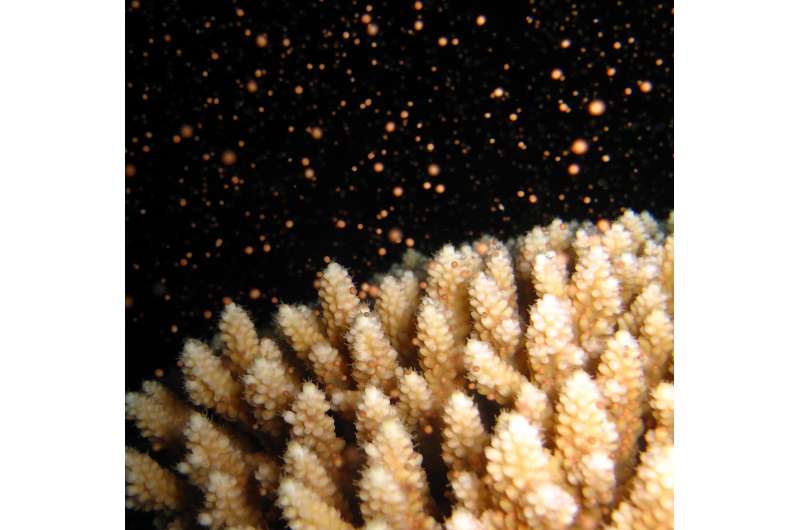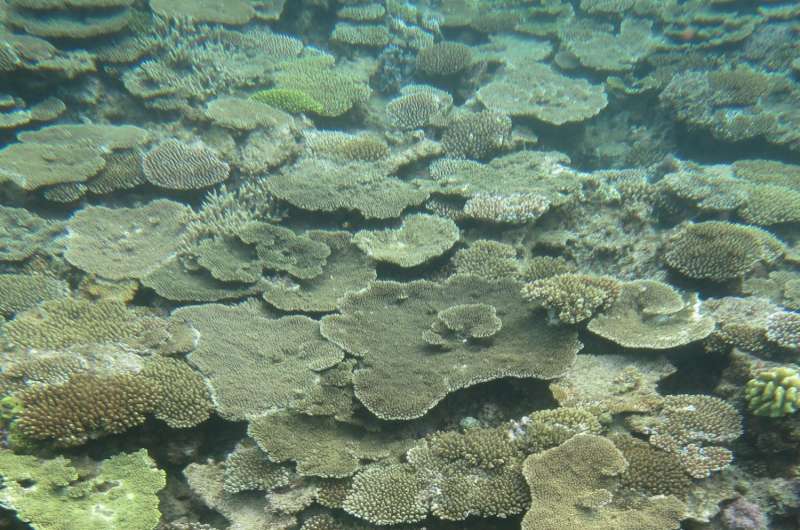Coral mass spawning triggered by seasonal rises in ocean temperature

Scientists have discovered rapidly rising seasonal sea temperatures are the likely trigger for coral reproduction allowing them to predict when mass spawning will occur.
Mass coral spawning is considered to be one of nature's most spectacular phenomena with dozens of coral species releasing eggs and sperm into the sea, on a few nights each year.
The event attracts divers to ecosystems like the Great Barrier Reef to witness the corals in action. Up until now, what drives the release has been a mystery.
An international study published in the journal of Proceedings of the Royal Society B, found that spawning coincided with the largest month-to-month increase in sea surface temperature. Wind speed also contributed to the timing, although to a lesser extent.
The paper's lead author, Assistant Professor Sally Keith from the Center for Macroecology, Evolution and Climate in Copenhagen says, "There would appear to be no optimum temperature for spawning, at least beyond the scale of the local coral population. We found corals on Lord Howe Island, off the eastern coast of Australia, spawn when the sea water is 22 degrees Celsius, whereas in the Persian Gulf the same species spawn when the temperature is 32 degrees Celsius. So the most important thing seems to be for corals to spawn together to maximise fertilization success."
The research was conducted over 16 years with samples from more than 80,000 colonies collected from 34 eco-regions in the Indo-Pacific, from Kenya to French Polynesia and from Lord Howe Island to the Persian Gulf.

Co-author Professor Andrew Baird from the ARC Centre of Excellence for Coral Reef Studies says knowing when corals are ready to spawn is a game changer.
"It should be a huge advantage to dive tourism and allow for more effective management of coastal development," says Baird. "It means processes that are known to affect the early life stages of corals, such as dredging, can be stopped when the corals are spawning."
The authors hope their research will finally lay to rest a common misconception that all corals on the Great Barrier Reef spawn on one night of the year.
"On the Great Barrier Reef there are corals spawning every month from September to March. Mass spawning is only one piece of the reproductive puzzle," says Keith.
Another area of concern is the potential for climate change to disturb coral reproduction. Many organisms, such as fish, rely on the event to power their own reproductive efforts. A change in the timing of spawning, could have deleterious flow-through effects in the ecosystem.
"Sea temperature increases are greatest in the periods just before summer," says co-author Jeff Maynard from the research institute CRIOBE, in French Polynesia. "Our on-going research using climate models suggests summer in many reef areas will come earlier and last longer in the future. The effect this might have on coral reef ecosystems is an important area for further research."
More information: Coral mass spawning predicted by rapid seasonal rise in ocean temperature, Proceedings of the Royal Society B: Biological Sciences, rspb.royalsocietypublishing.or … .1098/rspb.2016.0011
Journal information: Proceedings of the Royal Society B
Provided by University of Copenhagen
















